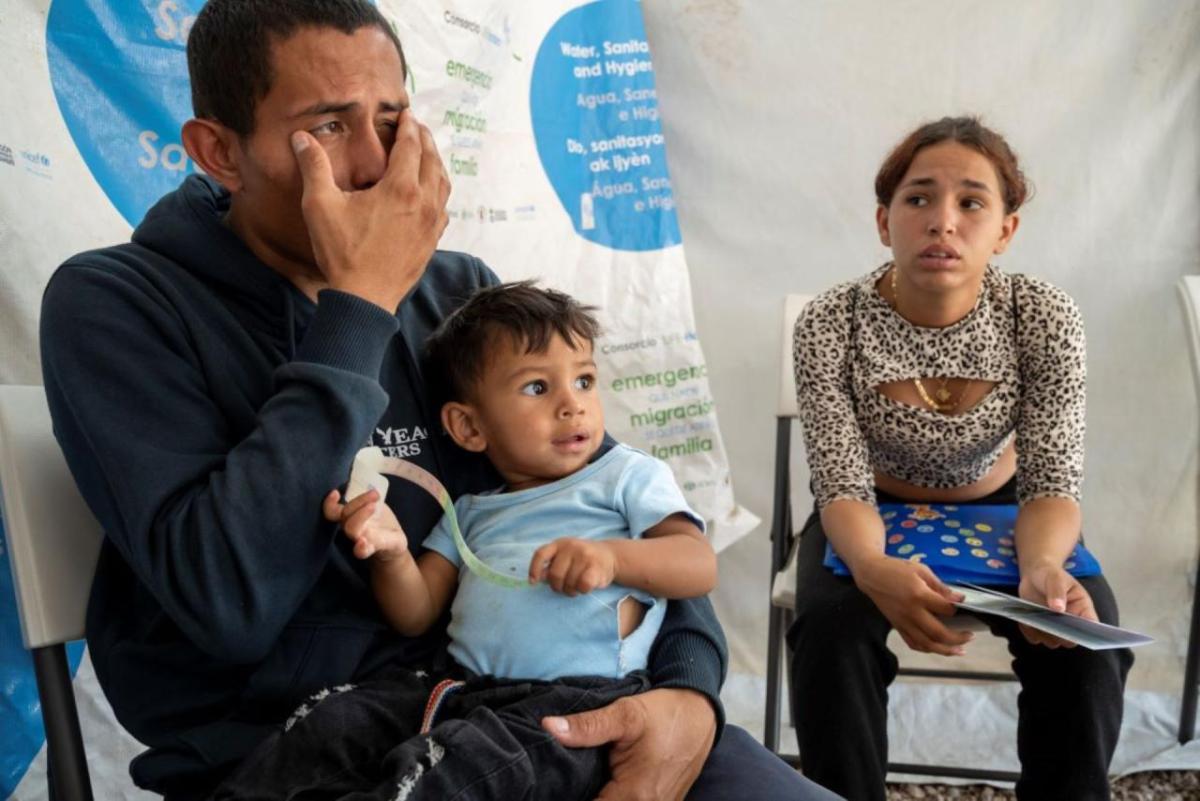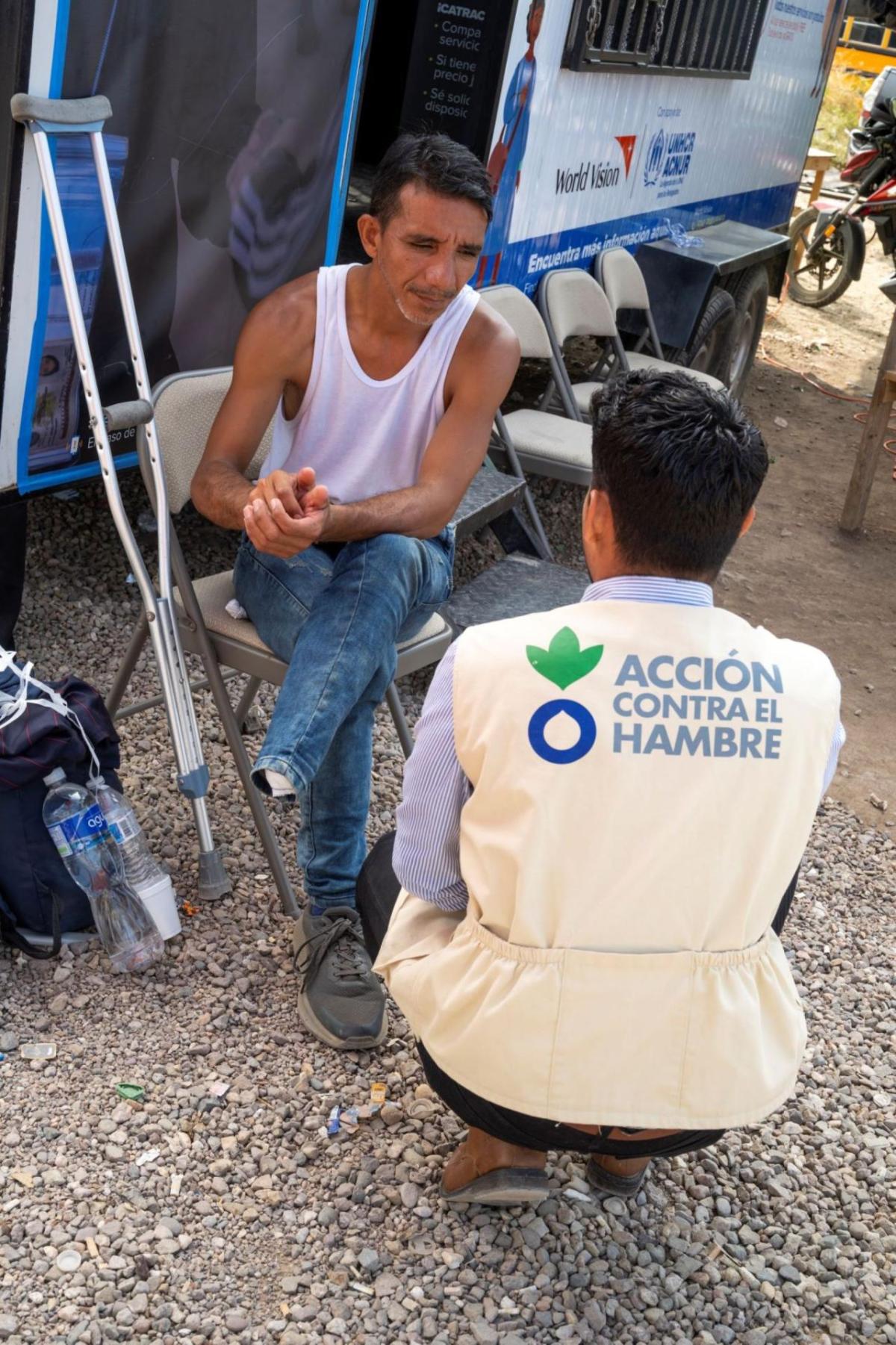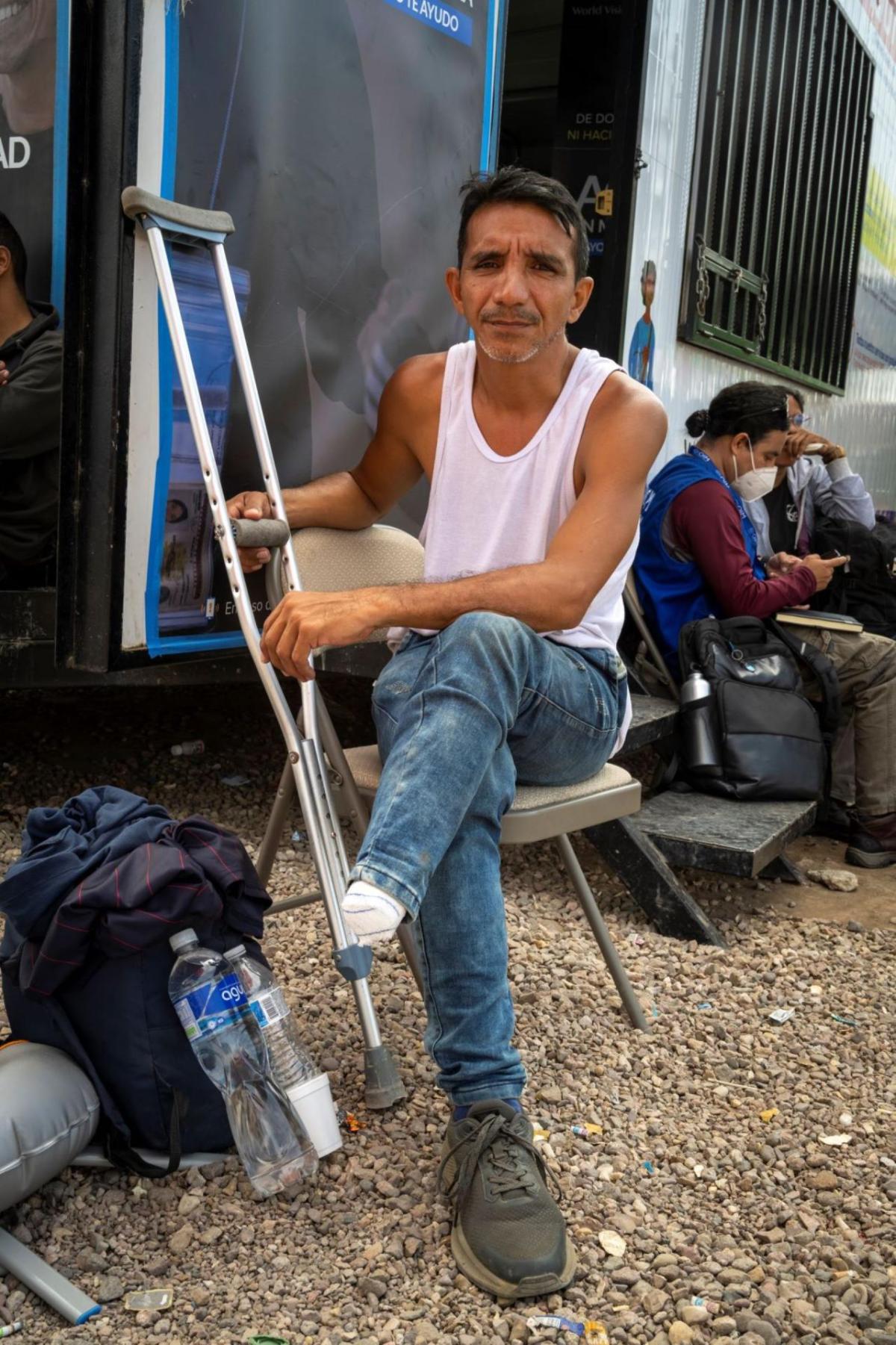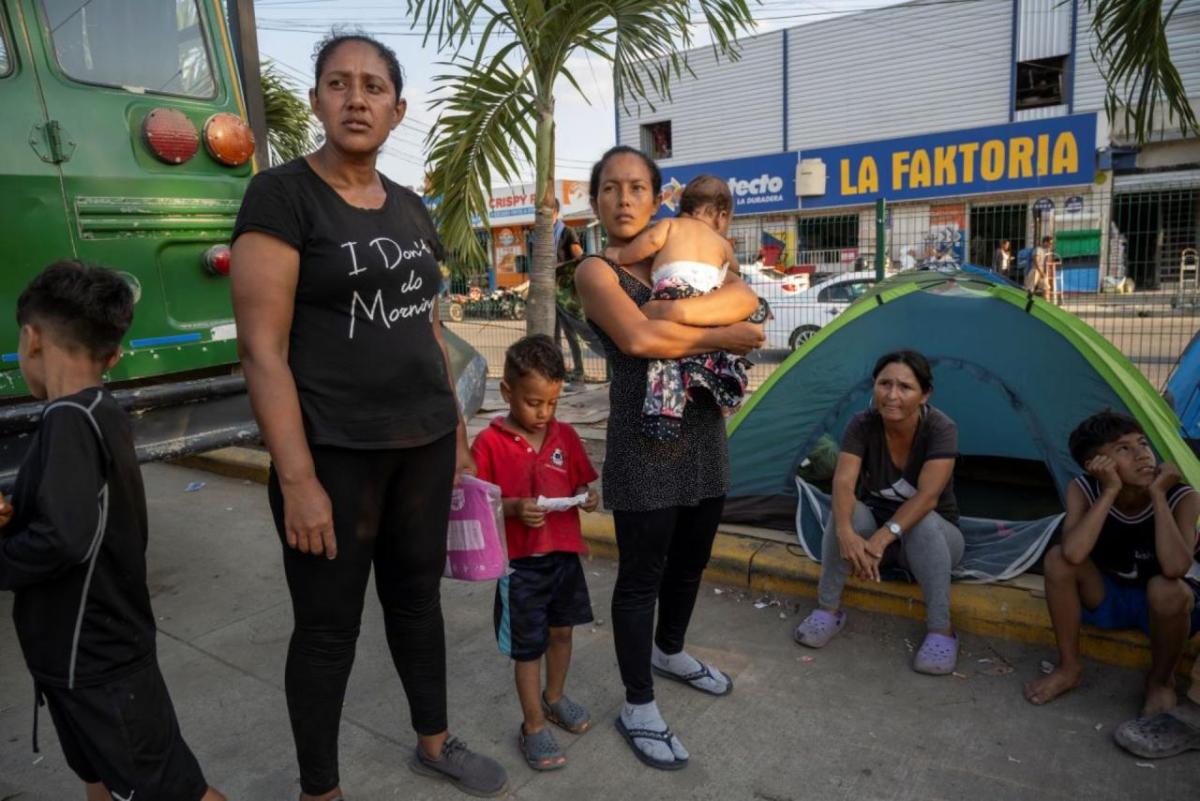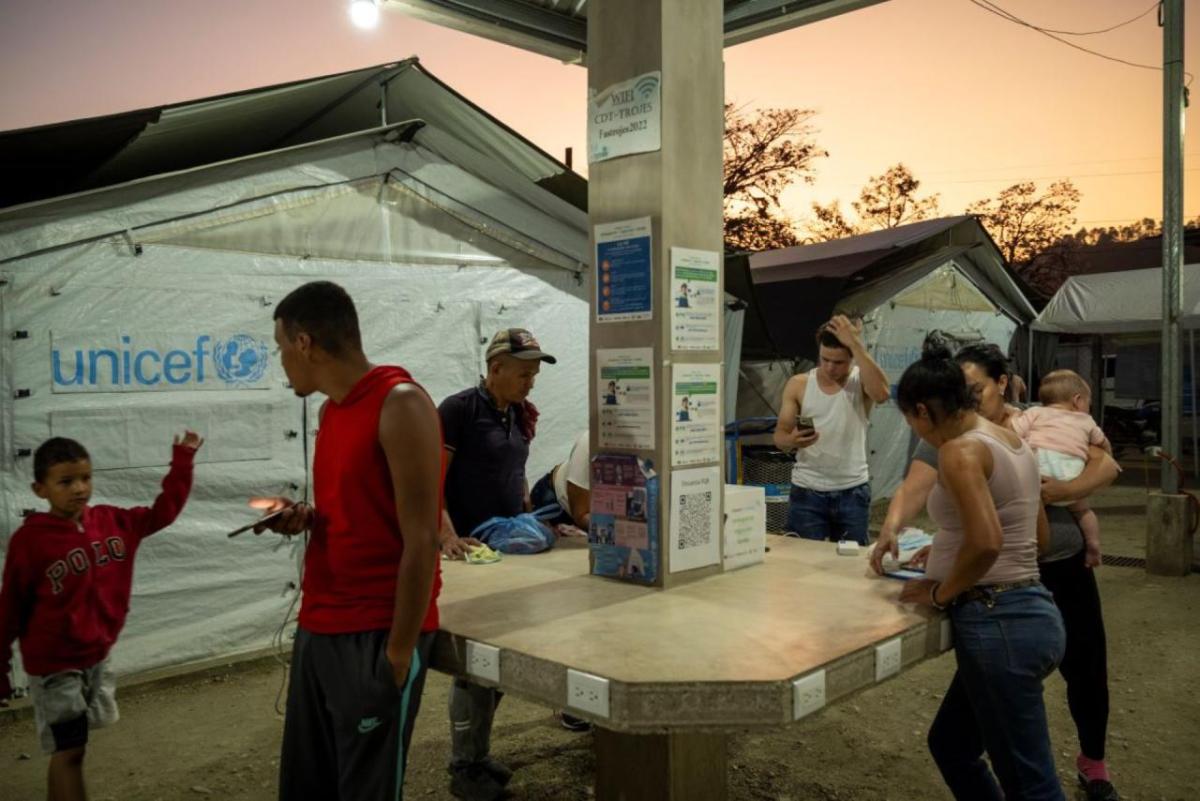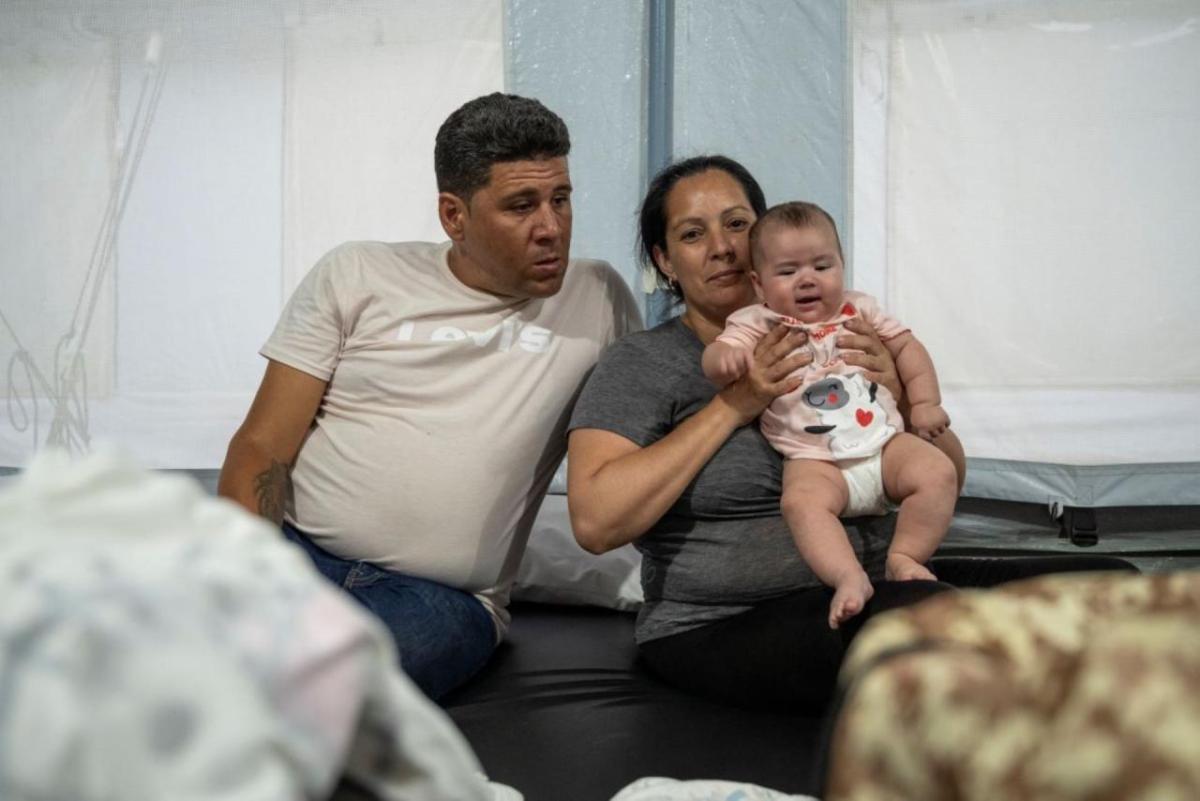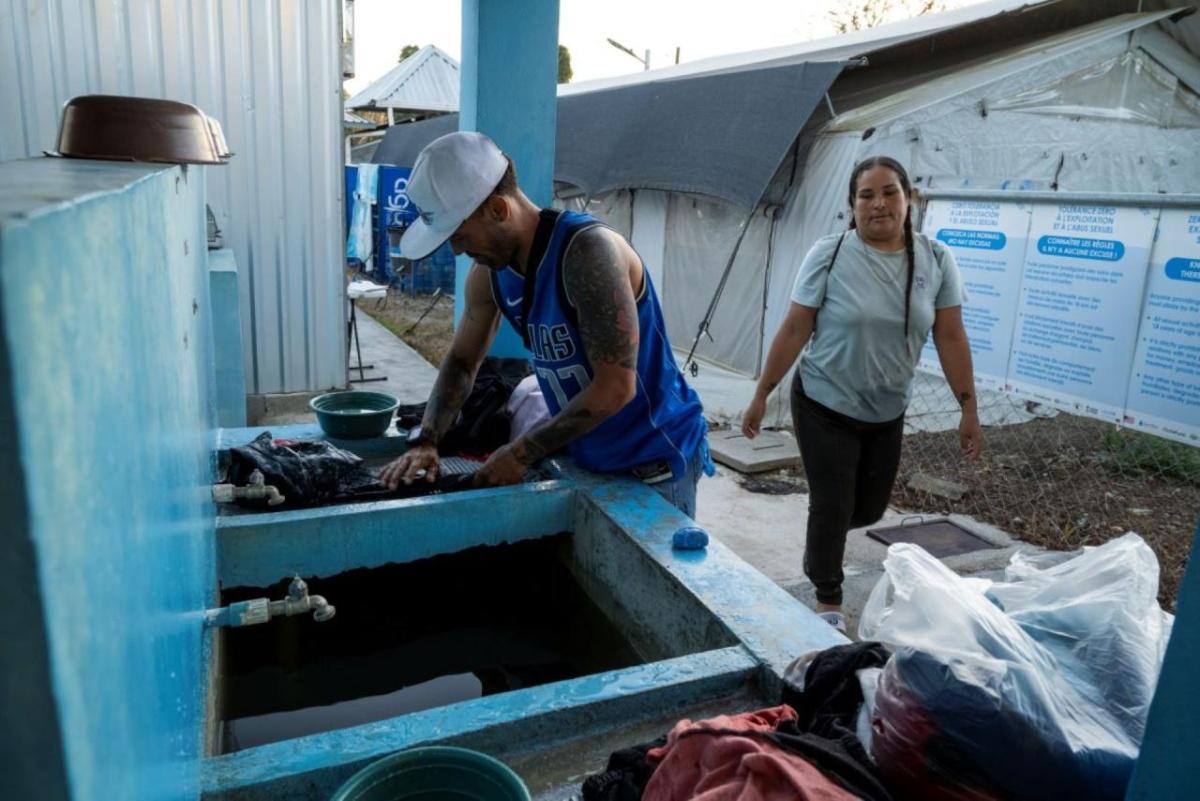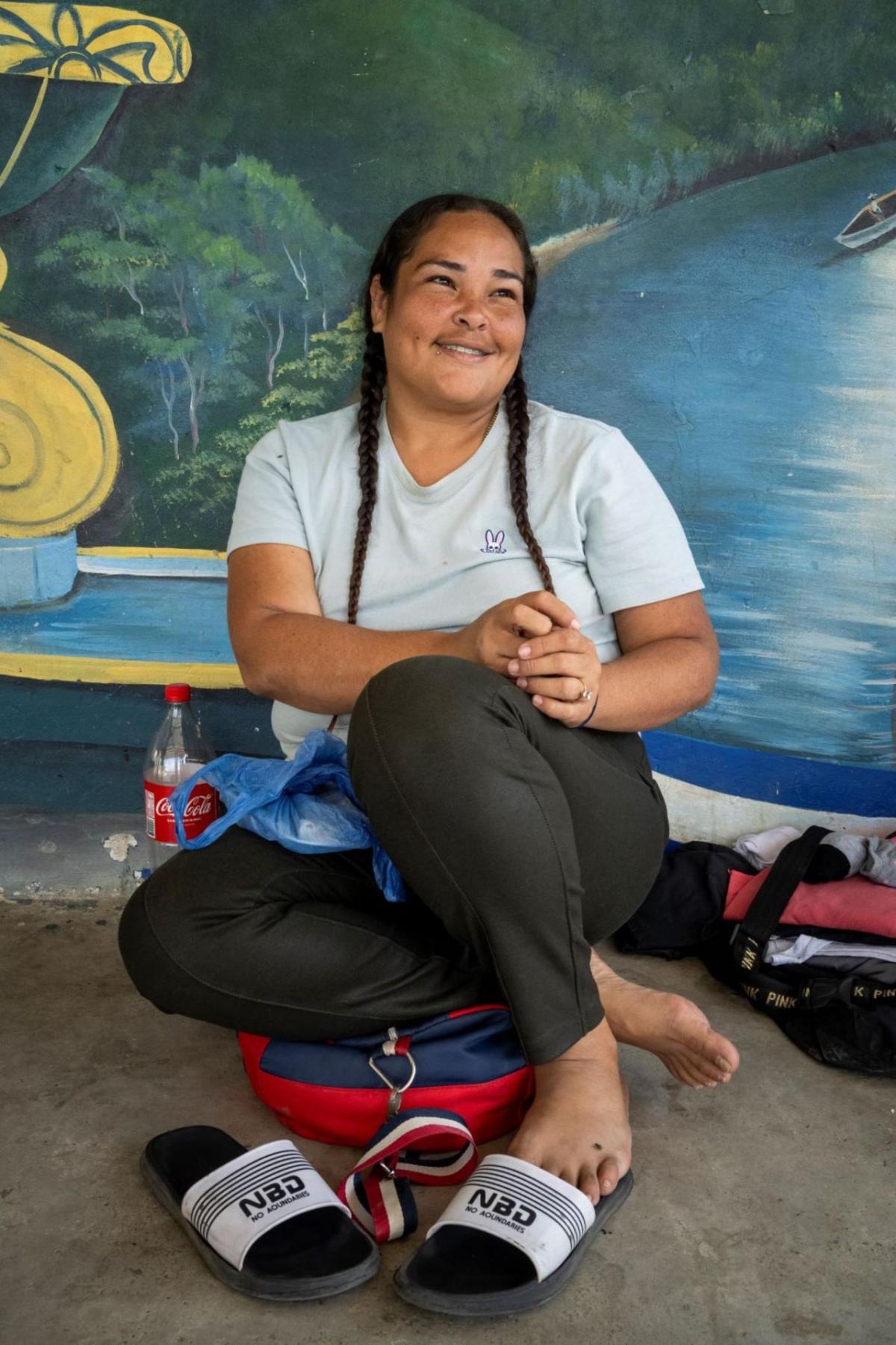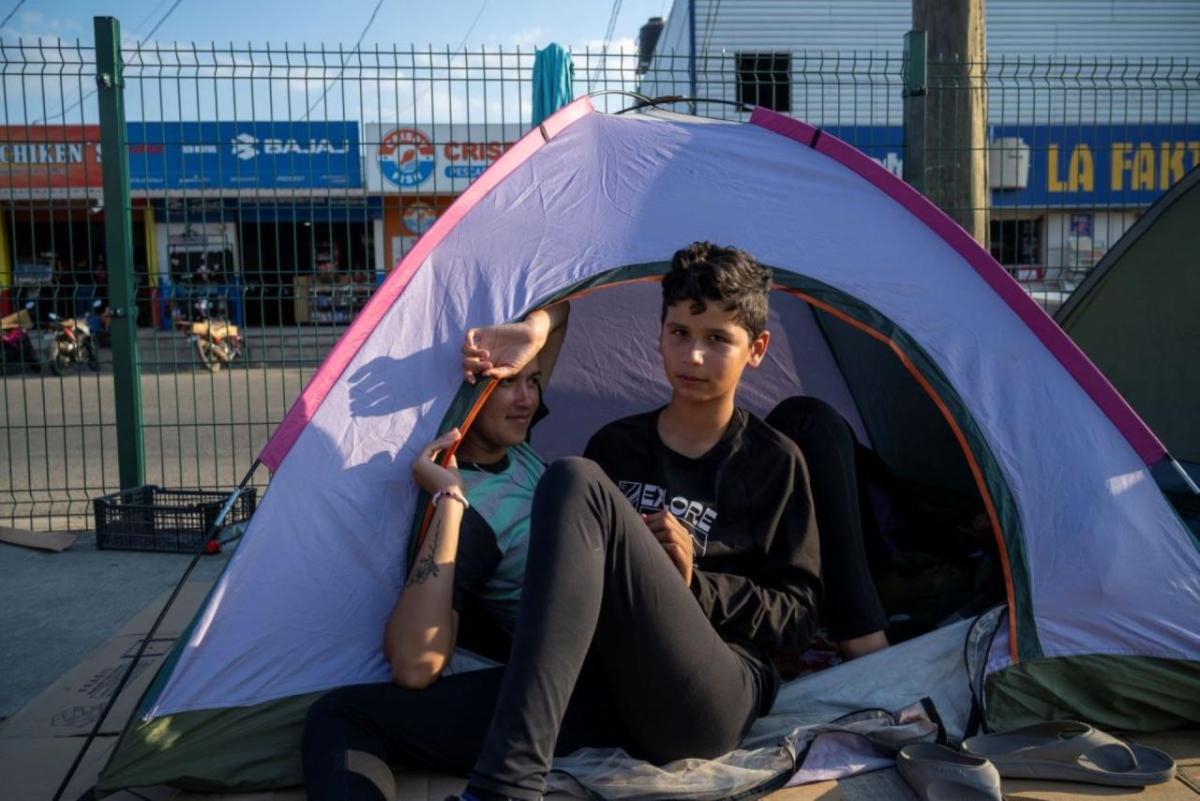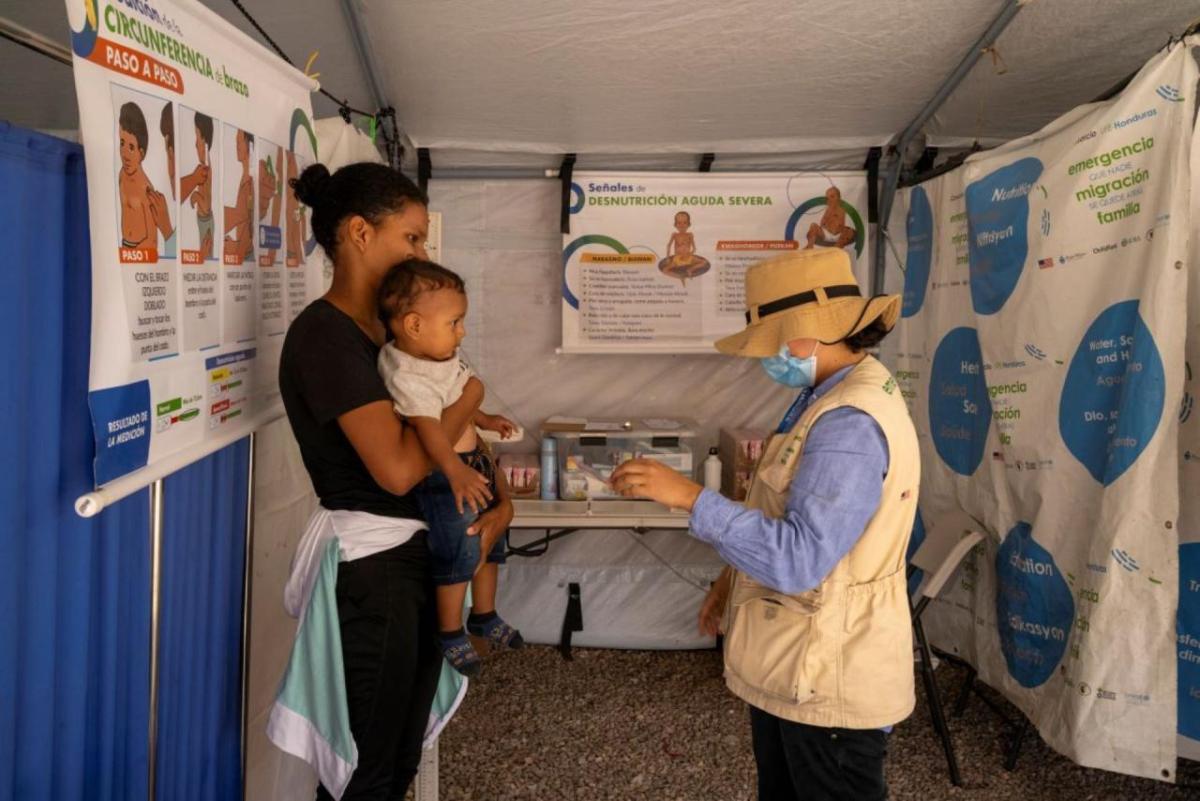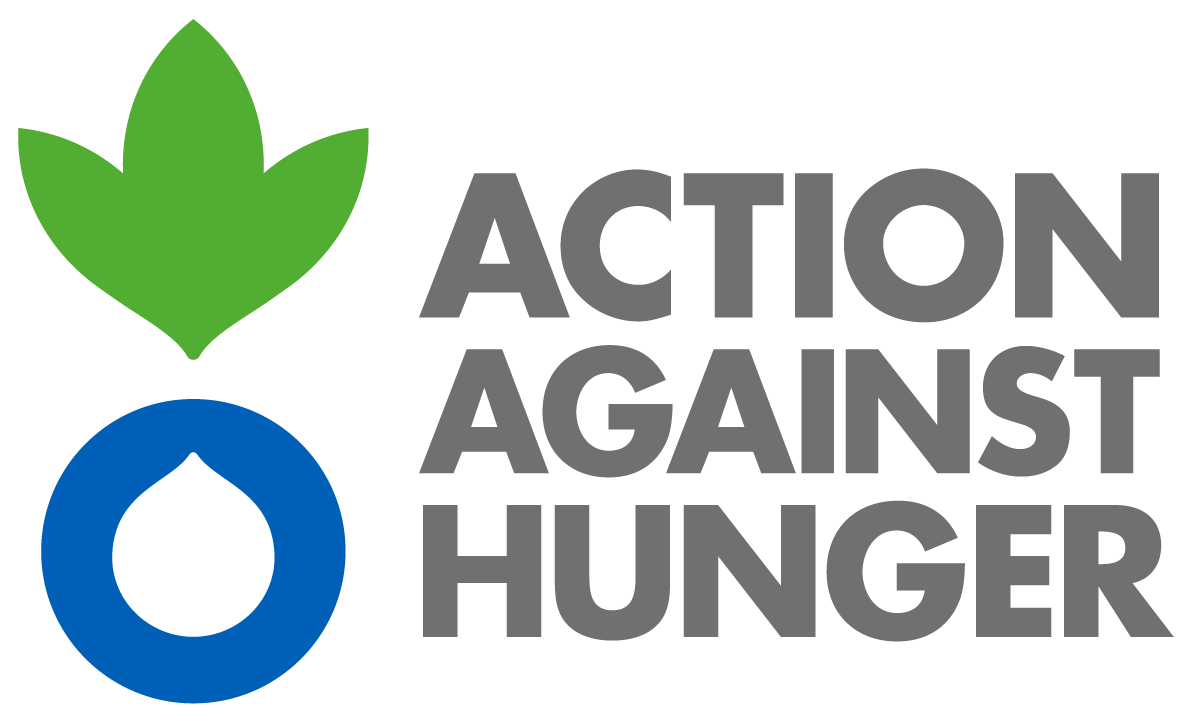Every Day, Migrants Face Deadly Threats in Central America.
Here Are Their Stories.
Migration throughout Central America has soared in the last five years. The most recent data shows that over 25 million migrants made the journey to North America as of 2020. Men, women, and children flee violence from drug cartels and gangs; worsening economic inequalities; gender-based violence; government instability; and natural disasters. They leave with all that they can carry — and the hope of starting a new life elsewhere.
Most of these families are forced to make harrowing decisions: begin a perilous journey in search of safety or remain and face unimaginable challenges. They risk illness, hunger, and death as they hike through muddy rainforests and remote villages hoping to find a secure place to rest. Families arrive with what very little remains of their old life — usually the clothes on their back and each other. When they finally find a place to pause, they are traumatized and in urgent need of humanitarian support. Few countries are equipped to handle the influx.
Most migrants are looking for a better, safer future for their children. Across Central America, more and more are embarking on long expeditions across country lines. Many cross through the Darién Gap, one of the world’s most dangerous migrant routes. Last year, a record number 520,000 migrants traversed this treacherous jungle, more than double the number reported in 2022. The surge is partly fueled by climate disasters: global warming, coupled with El Nino (a recurring phenomenon of high sea temperatures), led to floods and droughts across the region. Now, the cooling La Nina is set to begin in mid-2024, driving a higher-than-average hurricane season.
Other countries in Latin America are similarly breaking migration records. In Honduras, for instance, there are 30 times more migrants crossing the country irregularly than three years ago. Over 133,000 people arrived in only the first quarter of 2024, 120% more than the same period the year prior.
The people making this long and dangerous journey come from more than 100 different countries, such as Venezuela, Cuba, Haiti, Ecuador, Colombia, and even, although in smaller numbers, from Guinea Conakry, Senegal, Uzbekistan, India, and China. Although their journeys vary, most are united by the same dream: to live in a home free from hunger.
Our teams greeted four migrants who stopped in Honduras on their journey north. Here are their stories.
Angel José
The city of Danlí, in the eastern part of Honduras, lies close to the Nicaragua border. In recent years, it has become the epicenter of migration for people en route to North America. Depending on the time of the year, between hundreds to thousands of people cross there every day. Angel José was one of these migrants.
Angel arrived with his wife and two children at a health point run in part by Action Against Hunger. They were exhausted, hungry, and ill. They had just passed through the Darién Gap, one of the deadliest migrant routes in the world. Child migration has increased 40% there so far this year.
During their journey, Angel’s baby boy resorted to drinking contaminated river water. The water source is especially unsanitary — many people die on the route and their bodies are later found in the river.
“As soon as we left the jungle, the baby began to have serious diarrhea, and everything he ate he vomited,” said Angel. Despite rushing him to a hospital in Panama, the baby only recovered for a short period.
“When we arrived in Nicaragua the baby got sick again,” he said. “Twenty days ago, when we left, my baby weighed almost ten kilos (22 pounds). My baby now weighs only 7 kilos (15 pounds).”
Angel met Action Against Hunger teams in Nicaragua. When he continued traveling North, he looked for our teams again so they could check in on his baby. Now, Angel must remain in Honduras until the baby recovers. “As long as my baby is like this, I’m not going anywhere. My child’s life comes before the journey,” he said. “I don’t want to lose my baby during the course of the trip or have something worse happen to him. At least I thank God that I am here, close to a hospital, close to an organization that can give us support and help as migrants.”
Edgar Alexander
Edgar Alexander, 43, left Venezuela to make the long trek towards Guatemala. The journey was extremely difficult — especially since Edgar has a physical disability. In Danlí, Honduras, Action Against Hunger teams told him where he could find a temporary shelter to rest.
“I came with a group of Venezuelans who supported me, they were carrying me because I came with a crutch,” he said. “Thank God they put up with me, they waited for me, they were with me all the time, they kept up with me at my pace because of my disability.”
Traveling through the Darién Jungle was demanding, and Edgar tried to make do with a rubber boot and a sock. “I made myself a kind of prosthesis. I strapped it on with straps,” he said. “I made a lot of progress in the jungle thanks to this, but suddenly I felt a burning sensation under my foot. When I took off the boot, everything was peeled off, the leg, all skinless, with pus… I thought I was going to die there.”
Edgar has dreams of a better future: “I want to get a real prosthesis, I want to work, I want to fight for my family, for my children, my mother, my grandchildren.”
Emmy Patricia
When Emmy Patricia stopped at the Temporary Resting Center in Trojes, Honduras, she had already endured a deadly trek through the Darién Gap. Emmy began her journey in Venezuela and remembers horrible climbs through the muddy jungle.
“It rained; we couldn’t camp because we had no money,” she said. “The jungle is not for everyone. There are caimans, crocodiles, snakes, pumas… there are all sorts of things.”
She remembers seeing people die during the trek. One night, a pregnant woman camped outside because she didn’t have a tent; she was attacked by a puma.
“Another lady fell because there are many large slippery stones to walk on,” said Emmy. “The lady was walking around, wading through the river because it is very deep. She fell and broke both her knees; she couldn’t move forward. She was carrying her two little children and gave them to another woman because she couldn’t go on.”
Eddy
Eddy was once a teacher in Cuba. He is now trekking north and stopped momentarily at the Temporary Resting Center in Trojes, Honduras with his wife and baby.
He said that his family was welcomed and given urgent support. “When they opened, we went in, and they gave us toiletries, food, and protection.”
Eddy tries every day to prove himself to others he meets along the way — whether they are Mexicans, Hondurans, Nicaraguans, or Cubans like him. Along his route, he’s interacted with people from all different backgrounds and ethnicities.
“We are humble people, we have a heart, and we have the right to survive and to love each other,” he said. “We are one America. We are human beings, we laugh the same, our tears are the same, we have dreams.”
About Action Against Hunger in Central America
Action Against Hunger has been working in Honduras since 2020, Guatemala since 1998, and Nicaragua since 1996. In 2023, Action Against Hunger launched a lifesaving program in the Darién Gap to support the most vulnerable migrants. There, our mobile teams provide maternal and child healthcare through expert medical and nutrition staff.
At The Temporary Rest Center in Trojes and the health point in Danlí, Honduras, we greet migrants like Eddy, Emmy, Edgar, and Angel. We treat children and adults for malnutrition; we provide families with safe water and shelter; we distribute hygiene kits; we build sanitation facilities; and we coordinate multipurpose cash transfers.
Elsewhere in Latin America, our teams strengthen food security and provide assistance to thousands of people, especially women. We equip small-scale farmers with climate-smart agriculture techniques, connect them with local markets, and teach them how to save and earn more money.
To respond to urgent humanitarian needs, we work in partnership with UNICEF and other local and international NGOs, including the LIFE-Honduras Consortium and the Nutritional Attention to Vulnerable Population in Mobility Project in Guatemala.
About Action Against Hunger
Action Against Hunger leads the global movement to end hunger. We innovate solutions, advocate for change, and reach 28 million people every year with proven hunger prevention and treatment programs. As a nonprofit that works across 55 countries, our 8,900 dedicated staff members partner with communities to address the root causes of hunger, including climate change, conflict, inequity, and emergencies. We strive to create a world free from hunger, for everyone, for good.
**
By Kenneal Patterson and Ana Mora Segura
Photos by Gonzalo Höhr

